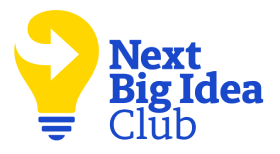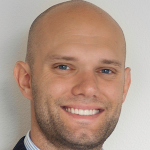Ashlee Piper is a former political strategist turned eco-lifestyle journalist. She has been a Professor of Sustainability Marketing at Loyola University Chicago and eco instructor for LinkedIn Learning. Well-known companies, such as Airbnb, LUSH, and Nissan, have sought her counsel on sustainability practices. Piper has spoken at the United Nations, SXSW, and has a popular TED Talk.
What’s the big idea?
A life of overconsumption can feel almost inescapable in our hyper-personalized advertising ecosystem. Billions of dollars go into getting people hooked on shopping. Fortunately, a way out of this addictive cycle is the No New Things challenge, which guides anyone fed up with buyer’s remorse toward a healthier, happier, more sustainable lifestyle.
Below, Ashlee shares five key insights from her new book, No New Things: A Radically Simple 30-Day Guide to Saving Money, the Planet, and Your Sanity. Listen to the audio version—read by Ashlee herself—in the Next Big Idea App.
1. It’s not you, it’s us.
If you wrestle with overconsumption or just buy way more stuff than you’d like to, then you’re not alone. Fifty-four percent of Americans report feeling stressed by their stuff, 60 percent say they don’t have enough time in the day, and 80 percent are in some form of consumer debt.
Overconsumption distracts us from what’s important and steals time, energy, money, and peace of mind—not to mention harms the planet. It’s safe to say that if you’re uncomfortable with your relationship to shopping, you’re probably experiencing one or more of these side effects.
2. It’s not your fault.
Our drive to buy more, buy better, and seek out stuff to meet or fulfill every need and emotion we experience is the result of decades of deft marketing programming. Starting at the dawn of the Industrial Revolution, Americans fundamentally shifted their consumption habits, and World War II turned consumerism into a patriotic act.
From 1941 to 1945, advertising expenditures grew from $2.2 billion to $2.9 billion, and the 1950s were seen as the “advertiser’s dream decade” (think Mad Men). Today, companies collectively spend nearly $515 billion annually on marketing in the US, much of which is devoted to consumer insights, data, and research.
“Our drive to buy more, buy better, and seek out stuff to meet or fulfill every need and emotion we experience is the result of decades of deft marketing programming.”
I don’t want to sound like I’m wearing a tinfoil hat, but there are entire departments that track how you buy, when you buy, and what you buy, as well as your demographics like income, gender identification, marital status, and more. It’s no wonder we are constantly exposed to advertisements that show us exactly what we need or what they can convince us we need.
3. This is your brain on shopping.
This conditioning isn’t just historical; it’s omnipotent and happening to you right now. It has morphed over the years to create an uncomfortable, unsustainable pattern that keeps industry overproducing, marketing playing on our emotions, and advertising driving us to buy because we don’t feel good enough. The act of browsing merchandise initiates the release of dopamine, so what you sometimes conflate with a feeling of pleasure is really you being flooded by desire.
Let’s say you’re a little stressed or excited when going out on a shopping trip. In that scenario, adrenaline enters the equation, heightening your senses and making you more impulsive. You’re essentially high, teetering between feeling in control and out of control, which ratchets up the dopamine release even more.
“The emotional high isn’t meaningfully sustained.”
The interesting part about dopamine is that it’s released in anticipation of getting the thing you want. Before you even receive the item you’re coveting, dopamine begins to Irish Goodbye, leaving you feeling…sort of empty. That’s why many shoppers regret buying many of their impulse purchases. The emotional high isn’t meaningfully sustained.
If you repeat this process regularly (aka: you shop at the same places around the same time), dopamine interacts with the part of the brain responsible for habit formation, recognizes your behavior as a pattern, and eventually automates it into a habit. In that way, impulsive shopping gets coded in your brain. This is biochemically similar to what happens when someone is addicted to drugs or alcohol. When you feel powerless over your shopping impulses, remember that you’re wired to chase your next fix.
4. The No New Things solution.
Help is on the way in the form of my 30-day No New Things Challenge, designed to help you build strong neural pathways that move you away from knee-jerk shopping and toward more sustainable, economical, circular ways of getting your needs met. Each day is designed with an action item and reflection that is relatively easy to do, but incredibly powerful for building a new relationship with shopping.
“You don’t need any supplies or fancy connections to get started.”
Moreover, these action items help you extend the longevity of the things you already own, tap into gratitude for the abundance you already have, declutter your space and schedule, save loads of money, focus on your goals and dreams, and nurture the things that actually matter and make your life better. You don’t need any supplies or fancy connections to get started. No New Things is as easy as turning off of the shopping tap and learning to redirect shopping impulses to healthier-for-you activities.
5. Make it stick.
The rest of the book covers how to keep the No New Things mindset going as an enjoyable lifestyle. You’ll hear from some of the people who have done the Challenge with remarkable results, from the family that saved enough money and got organized so they could adopt a little girl to the woman who saved a whopping $36,581 just from items she wanted to buy, tracked, and didn’t. And yes, I consider that savings because she saved herself from spending that amount.
No New Things gives you the tools, guidance, and support to shift your mindsets and habits, and in turn, live better—while also being better to others and the planet. Thousands have participated in No New Things before it was a book, so imagine the community doing the Challenge alongside you. Imagine the broader, powerful impact it can make. Getting closer to a more peaceful, prosperous, satisfying life while also upending epidemic overconsumption? That’s a win-win.
Enjoy our full library of Book Bites—read by the authors!—in the Next Big Idea App:










